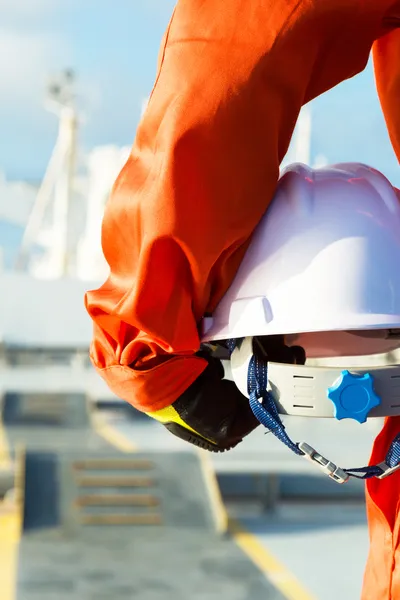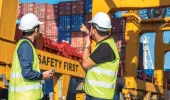The aim of the UK's Seafarer Health and Safety Regulations and Codes of Practice is to provide an equivalent level of safety and health for those working on UK ships, in comparison to regulations for workers ashore in the UK. They contain legislation deriving from international regulations and mirroring the HSE legislations.
Refer to the Maritime Labour Convention for Seafarers page to find out more.
Seafarer Health and Safety Codes of Practice
The Seafarer Safety and Health Team is responsible for updates to The Code of Safe Working Practices for Merchant Seafarers (COSWP) and for publishing Codes of Practice for Controlling Risks due to Noise and Vibration.
Code of Safe Working Practices for Merchant Seafarers
The latest edition of The Code of Safe Working Practices for Merchant Seafarers (the Code) is the 2024 edition. It has been endorsed by the National Maritime Occupational Health and Safety Committee (NMOHSC), UK Chamber of Shipping, Nautilus International, and the National Union of Rail, Maritime and Transport Workers (RMT).
The Code is recognised as a best practice guide for improving health and safety on board ships and is intended primarily for merchant seafarers on UK-registered ships. It is addressed to everyone on a ship, regardless of rank or rating as well as shore-based staff with safety responsibilities.
The latest amendments to COSWP can be found in MIN 688 (M) Amendment 3 code of safe working practices: 2025 edition.
Carrying the Code on board
Regulation 12a of Statutory Instruments S.I. 2015/1692 require that:
"The Company must ensure that there are sufficient copies of the Code on board a ship so that it is easily accessible and readily available to all workers and seafarers who are not workers."
Codes of Practice for Controlling Risks on Board Ship due to Noise or Vibration
Following implementation of regulations in 2007 on the control of noise and the control of vibration, the MCA produced for industry three Codes providing guidance and interpretation of the requirements in order to comply with the regulations.
These are:
- Code of Practice for Controlling Risks due to Noise on Ships
- Code of Practice for Controlling Hand Transmitted Vibration on Ships
- Code of Practice for Controlling Risks due to Whole Body Vibration on Ships
These Codes of Practice are intended to assist those concerned with designing, building, owning or managing ships to comply with the Merchant Shipping and Fishing Vessels (Control of Noise at Work) Regulations (S.I. 2007/3075) and the Merchant Shipping and Fishing Vessels (Control of Vibration at Work) Regulations 2007 (S.I. 2007/3077).
These Codes of Practice deal with:
- The assessment from noise and vibration on ships
- The measurement and evaluation of noise and vibration
- The assessment of the severity of exposures to noise and vibration
- The identification of controls to eliminate or reduce exposure to noise and vibration
- The involvement of crew members in the control of noise and vibration risks, including provision of information and training
- The provision of health monitoring and surveillance for noise and vibration
Availability of publications
You can purchase the latest editions of MCA Seafarer Safety and Health Codes of Practices, either in hard copy or PDF, from the MCA's Official Publisher TSO.
Liaison with other UK government health and safety teams
We have strong collaborative links with the UK's Health and Safety Executive (HSE) and Marine Accident Investigation Branch (MAIB). A Memorandum of Understanding between all three has been agreed to ensure effective collaborative working where individual duties overlap at the water margin around the UK.

